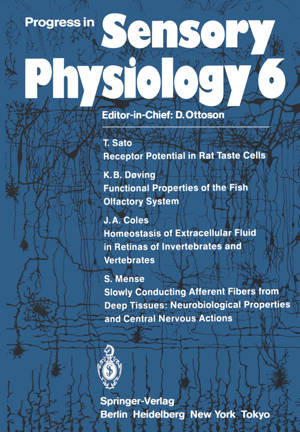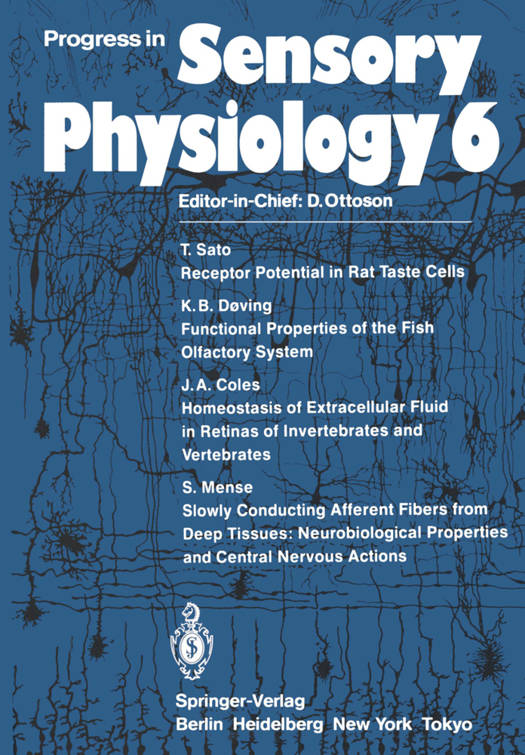
- Afhalen na 1 uur in een winkel met voorraad
- Gratis thuislevering in België vanaf € 30
- Ruim aanbod met 7 miljoen producten
- Afhalen na 1 uur in een winkel met voorraad
- Gratis thuislevering in België vanaf € 30
- Ruim aanbod met 7 miljoen producten
Zoeken
Progress in Sensory Physiology
€ 168,45
+ 336 punten
Omschrijving
1. Themeanrestingmembranepotentialofrattaste cells is - 36 mVunderadap- tation of the tongue to 41.4 mMNaCI and - 50mV under water adaptation. 2. The shapes ofreceptor potentials ofrattastecells inresponsetothe four basic tastestimuli(0.5MNaCI, 0.02 M Q-HCI, 0.01 MHCl, and0.5 M sucrose)are classified into three types, namely (1) a depolarization alone, (2) a depolariza- tion preceded by a transient hyperpolarization, and (3) a hyperpolarization alone. No regenerative spike potentials are evoked in rat taste cells by chemical stimuli. The amplitude of rat taste cell responses increases with increasing concentrationofthe taste stimulus. Mostofthe rat taste cells show a multiple sensitivity in that single cells respond to various combinations of the four basic taste stimuli with depolarizations or hyperpolarizations. 3. The rise and fall times of depolarizing responses to 0.5 M NaCI are much shorter than those of depolarizing responses to the other three stimuli. The fall time of depolarization evoked by 0.01 M HCI is the longest. The rise and fall times of all hyperpolarizing responses are shorter than those of all de- polarizing responses.
Specificaties
Betrokkenen
- Uitgeverij:
Inhoud
- Aantal bladzijden:
- 228
- Taal:
- Engels
- Reeks:
- Reeksnummer:
- nr. 6
Eigenschappen
- Productcode (EAN):
- 9783642704130
- Verschijningsdatum:
- 6/12/2011
- Uitvoering:
- Paperback
- Formaat:
- Trade paperback (VS)
- Afmetingen:
- 170 mm x 244 mm
- Gewicht:
- 381 g

Alleen bij Standaard Boekhandel
+ 336 punten op je klantenkaart van Standaard Boekhandel
Beoordelingen
We publiceren alleen reviews die voldoen aan de voorwaarden voor reviews. Bekijk onze voorwaarden voor reviews.







